Try Amazon Audible Plus

Try Amazon Audible Plus
Illustrations of Franks and Saracens of the 12th century (before 1140)
Les Monuments de la Monarchie Franšoise
Qui Comprennent l'Histoire de France
Tome Premier
A series of 10 painted windows in the monastery church of St Denis in Paris
destroyed during the French Revolution
Click on a plate for a large image.
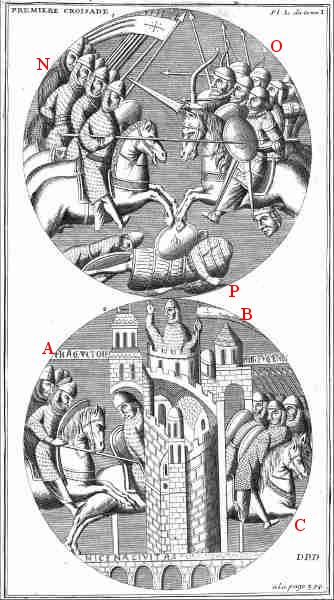
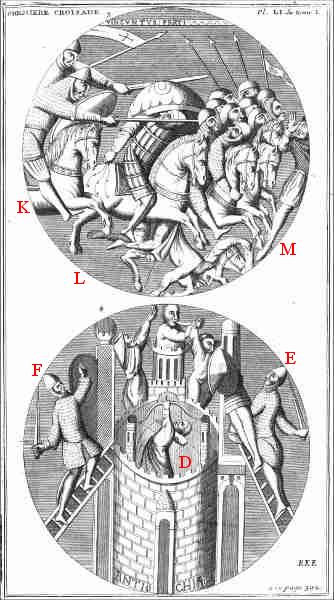
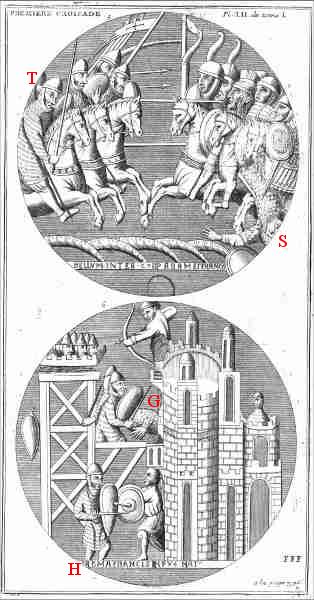
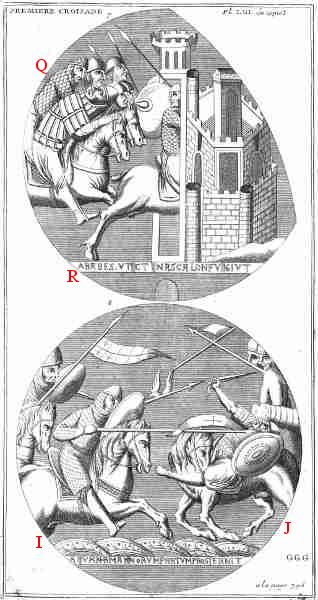
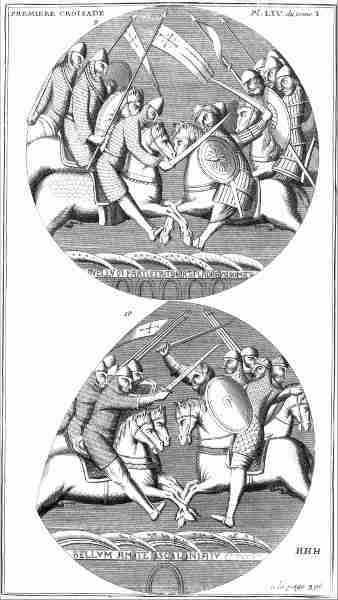
Source: Les Monuments de la Monarchie Franšoise, 1729
Download this site as a 3.8MB zip
Syrian cavalry in Armies and Enemies of the Crusades 1096-1291 by Ian Heath, based on the painted windows in the monastery church of St Denis in Paris.
Referenced on pp.27-28, Arms and Armour of the Crusading Era, 1050-1350, Western Europe and the Crusader States by David Nicolle
23A- T Eighteenth-century drawings of lost early to mid-l2th century stained glass windows illustrating the First Crusade, from St Denis, Paris
(ex-Monuments de la Monarchie Franšoise, Paris, 1729)
A-C - 'Capture of Iznik (Nicea)'; D-F - 'Capture of Antakya (Antioch)'; G-H - 'Capture of Jerusalem'; I-J - 'Defeat of Egyptians at Asqalon';
K-M - 'Turks defeated outside Iznik (Nicea)'; N-P - 'Battle of Dorylaeum'; Q-R 'Egyptians flee into Asqalon'; S-T - 'Defeat of Turks outside Antakya (Antioch)'.
These 18th-century drawings of lost 12th-century windows must be treated with great caution.
Yet some features can be picked out with some degree of confidence.
The Crusaders (A, B, E, F, C, H, I, K, N and T) have symmetrical conical helmets without nasals, long-sleeved mail hauberks and kite-shaped shields.
Their weapons are spears and swords. The Muslims are more varied and the artists seem to have attempted to distinguish between various ethnic groups.
The Turks of Anatolia (A and C) are similar to the Crusaders except that they are given round helmets, one of which might correctly have a form of neck extension (A).
Elsewhere they are shown with the same equipment (M) except that one of them wears a lamellar cuirass (L).
Lamellar and mail are again given to the Anatolian Turks at Dorylaeum (O and P) and to other Turks at Antioch (S),
although in this latter battle a scale hauberk is also indicated.
The Arab-Egyptian troops in Jerusalem and Asqalon (G, H, J, P, Q and R) differ from the Turks in various details.
Mail or scale as well as lamellar armours are portrayed, as is an unarmoured man with a small round shield and an apparently shaven head (H).
A man whose sword has a tassel or thong from its pommel rides barefooted and perhaps without stirrups (J).
In a final scene the Egyptians who flee into Asqalon include a man with what could be a quilted armour (Q)
and another with a mail or scale shirt that appears to end at his waist or to go inside a kilt or skirt (R).
Almost all these features are seen in Islamic arms and armour of this period.
Although few are accurately portrayed in the windows, their presence in pictures of the First Crusade
made within relatively few years of the event may indicate either
that the artist saw sketches made by clerics who accompanied the Crusade or that the artist heard verbal descriptions from men who took part.
One way or another accurate information about Islamic arms and armour had yet to degenerate into the conventionalised 'Moorish' or 'Saracen' forms seen later.
Other 12th Century Illustrations of Costume & Soldiers
Egyptian Illustrations of Costume & Soldiers
Index of Illustrations of Costume & Soldiers





